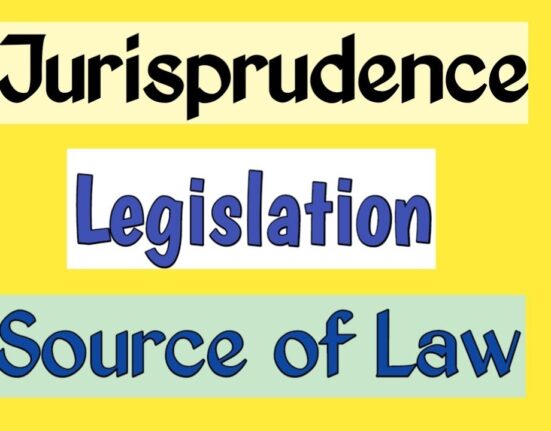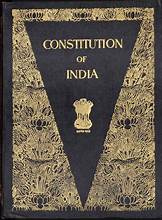Introduction
In today’s era, the world is becoming familiar with several intellectual inventions which are impacting the relations of one another. The TRIPS agreement, created in 1995 by the WTO, addresses international trade intellectual property rights. This agreement was formed to set standards for protecting and implementing trade rights in different countries. As the TRIPS agreement is an important part of promoting trade, resolving disputes and having fair trade practices.
What is Trade and International Trade?
Trade is the exchange of goods and services between two or more parties. While International Trade means the trade between two independent sovereign nations.
What is Intellectual Property Rights (IPR)?
“Intellectual Property shall include rights relating to literary, artistic, and scientific works, discoveries throughout all areas of human endeavor, scientific advances, industrial design rights, trademarks, service marks, and commercial names and designations, protection against unfair competition,” states Article 2 of the WIPO (World Intellectual Property Organization) – Central Organization for the Protection of Intellectual Property laws and the UN expert organization.
IP is intangible assets of individual mind’s creation. It includes artistic expressions, signs, symbols and names used in commerce, designs and inventions. IPR is legal right given to individual for their creation. The WTO’s TRIPS agreement recognizes the necessity of IP in international market as IPR are valued and exchanged. IP rights give their owners rights to exclude others from making use of their creations only for a limited period. IP rights entitle the owners to receive a royalty or any sort of financial compensation or payment when another person uses their creations[1].
There are two types of IPR:
- Copyrights
- Industrial Property
Details of TRIPS and its Agreement
HISTORY
TRIPS originated in the Uruguay Round of GATT trade negotiations, leading to the WTO’s establishment in 1995. It aimed to address concerns about inadequate intellectual property protection and enforcement. TRIPS introduced minimum standards for various forms of IP and sought to balance protection with innovation and fair trade. It also established dispute settlement mechanisms. Additionally, TRIPS shaped global IP norms, influenced domestic laws, and spurred discussions on public health, access to medicines, and traditional knowledge. It is a crucial international framework for IP protection and enforcement.
What is TRIPS?
TRIPS stands for Trade-Related Aspects of Intellectual Property Rights. The TRIPS agreement is a WTO-administered international agreement setting minimum standards for IP protection among member countries. TRIPS covers various forms of IP, including patents, copyrights, trademarks, industrial designs, and trade secrets. Moreover, It aims to establish a balance between protecting IP rights and promoting innovation, technology transfer, and fair international trade. TRIPS also provides a framework for dispute resolution and encourages cooperation among nations in the field of intellectual property.[2]
Before the establishment of the WTO, the leading international agreements under WIPO were the Paris Convention for the Protection of Industrial Property (covering patents, industrial designs, etc.) and the Berne Convention for the Protection of Literary and Artistic Works (covering copyright). However, these agreements did not cover all areas of intellectual property, and in some cases, the prescribed standards of protection were considered insufficient. The TRIPS Agreement was introduced to supplement these existing international standards and significantly enhance the level of intellectual property protection globally.
What is Agreement on TRIPS?
The TRIPS Agreement was established in 1995 as part of the World Trade Organization (WTO) agreement. It sets forth minimum standards for the availability, scope, and use of various forms of intellectual property, including trademarks, copyrights, geographical indications, patents, industrial designs, layout designs for integrated circuits, and undisclosed information or trade secrets. Moreover, It applies to all member states of the WTO and incorporates fundamental international trade principles regarding intellectual property.
One of the key aspects of the TRIPS Agreement is the provision of exceptions and limitations that strike a balance between the interests of intellectual property and those of public health and economic development. Additionally, This agreement plays a significant role in facilitating trade in creativity and knowledge, resolving trade disputes related to intellectual property, and providing WTO members with the flexibility to pursue their domestic policy objectives. It also outlines the importance of innovation, technology transfer, and public welfare within the framework of the intellectual property system.
The administration and monitoring of the TRIPS Agreement is the responsibility of the TRIPS Council. The agreement was negotiated during the Uruguay Round of the General Agreement on Tariffs and Trade (GATT) from 1986 to 1994. It is often referred to as a “Berne and Paris-plus” Agreement, signifying its extension beyond the provisions of the Berne Convention for the Protection of Literary and Artistic Works and the Paris Convention for the Protection of Industrial Property.[3]
Issue govern by TRIPS Agreement[4]
Majorly 3 types of issue is governed under this agreement
- Standards: Member states must establish minimum criteria for protecting intellectual property rights (IPRs) in each covered category, including subject matter, granted rights, exceptions, and minimum duration of protection.
- Enforcement: The Agreement covers domestic enforcement processes and remedies for intellectual property rights, including rules on civil, administrative, and criminal proceedings, provisional measures, border requirements, ensuring effective exercise of right holders’ rights.
- Dispute resolution: WTO member disputes on TRIPS Agreement responsibilities are resolved through the WTO’s dispute resolution processes.
Objective and importance of TRIPS
Objective: To promote and defend intellectual property rights to facilitate technology transfer, fair international trade, and innovation. Establish guidelines, enforce procedures, support developing nations, encourage global cooperation, and balance IP protection with public interests and economic development.[5]
Importance: The TRIPS Agreement, a treaty among WTO member countries, aims to safeguard intellectual property rights by setting minimum standards of protection. It encourages innovation, economic growth, and job creation while providing a legal framework for enforcement and combating piracy. It promotes a level playing field for international trade in intellectual property rights, benefiting all WTO members.[6]
Parts of TRIPS Agreement
- PART I GENERAL PROVISIONS AND BASIC PRINCIPLES:- Deals with Article 1 to 8
- PART II STANDARDS CONCERNING THE AVAILABILITY, SCOPE AND USE OF INTELLECTUAL PROPERTY RIGHTS:- Deals with Article 9 to 40
- PART III ENFORCEMENT OF INTELLECTUAL PROPERTY RIGHTS:- Deals with Article 41 to 61
- PART IV ACQUISITION AND MAINTENANCE OF INTELLECTUAL PROPERTY RIGHTS AND RELATED INTER-PARTES PROCEDURES:- Deals with Article 62
- PART V DISPUTE PREVENTION AND SETTLEMENT:- Deals with Article 63 to 64
- PART VI TRANSITIONAL ARRANGEMENTS:- Deals with Article 65 to 67
- PART VII INSTITUTIONAL ARRANGEMENTS; FINAL PROVISIONS:- Deals with Article 68 to 73.[7]
General provisions and basic principles
Articles 3, 4, and 5 of the TRIPS Agreement outline the essential principles of national and most-favored-nation treatment for foreign individuals and entities in relation to intellectual property. These principles cover all aspects of intellectual property protection, including standards, availability, acquisition, scope, maintenance, enforcement, and use. The national treatment provision prohibits discrimination between a member’s own nationals and those of other members, while the most-favored-nation treatment clause prohibits discrimination between nationals of different members.
TRIPS allows for the same exclusions permitted under the pre-existing WIPO intellectual property treaties in terms of national treatment commitments. Governments also have the authority to enact legislation to prevent IPR abuse or challenge practices that unjustly restrict commerce or hinder the international transfer of technology, in accordance with the provisions of the Agreement.[8][9]
Kinds of IP
Part 2 (“STANDARDS CONCERNING THE AVAILABILITY, SCOPE AND USE OF INTELLECTUAL PROPERTY RIGHTS”) of “AGREEMENT ON TRADE-RELATED ASPECTS OF INTELLECTUAL PROPERTY RIGHTS” contains all the kinds of IP.
Section 1:- Copyright and Related Rights (Article 9 to 14)
According to the Agreement, copyright protection applies to various forms of creative works, including literary, musical, dramatic, photographic, sculptural, architectural, choreographic, graphic, motion picture, sound recording, multimedia works, and computer programs. The copyright owner has the exclusive rights to control the reproduction, distribution, derivative works, performance, exhibition, and utilization of the copyrighted work for a certain period of time. Copyright protection is based on originality rather than innovation, meaning the work must be created by the copyright owner or claimant, but it does not necessarily have to be groundbreaking or innovative.
The Berne Convention extends copyright protection to computer programs in both source and object code. Compilations of data in various formats, protected due to the selection or arrangement of their contents, are also recognized as creative works. Authors of computer programs and cinematographic works have the right to control the commercial rental of original or copied works to the public. However, member governments have the authority to revoke rental rights if it leads to widespread copying that threatens the uniqueness of the work. The minimum term of copyright protection is not less than 50 years, as stated in Article 12 of the Agreement.
Section 2:- Trademarks (Article 15 to 21)
Article 15 of the Agreement states that any sign or combination of signs capable of distinguishing the products or services of one undertaking from those of others is eligible for trademark registration, as long as it is perceptible. This includes words, characters, digits, figurative elements, color combinations, and any combinations thereof. Article 16 grants the trademark owner exclusive rights to prevent third parties from using similar or identical signs for goods or services that are similar to those covered by the registered trademark.
Section 3:- Geographical Indications (Article 22 to 24)
Article 22 of the Agreement recognizes geographical indications as designations that identify a good as originating from a specific territory or region. The quality, reputation, or unique characteristics of the product are primarily attributed to its geographical origin. Geographical indications have traditionally been associated with goods produced in specific territories. They serve as reliable indicators of the product’s qualities, and their significance is comparable to trademarks, warranting legal protection.
Section 4:- Industrial Designs (Articles 25 to 26)
Articles 25 and 26 of the TRIPS Agreement require member states to provide protection for original and distinctive industrial designs. The Agreement, building upon the principles of the Paris Convention, sets a minimum duration of 10 years for the protection of industrial designs. When commercial activities are involved, the rights holder has the authority to prohibit third parties from producing, importing, or selling products that incorporate the protected design without the holder’s consent. The TRIPS Agreement expands upon the scope of protection provided by the Paris Convention, offering stronger safeguards for industrial designs.
Section 5:- Patents (Articles 27 to 34)
Article 27 of the TRIPS Agreement establishes patents as intellectual property rights granted to inventors, enabling them to prevent others from creating, using, selling, or importing the patented invention within a designated region for a specified period. However, patentability is subject to three exceptions. Firstly, inventions contrary to public health, animal or plant life, or the environment are excluded. Secondly, diagnostic, medicinal, and surgical procedures for human and animal treatment may be excluded from patentability.
The standard term of patent protection is 20 years from the filing date, with member nations having the flexibility to provide limited exemptions to exclusive patent rights under Article 21. These exemptions should not unreasonably prejudice the legitimate interests of patent owners or conflict with the normal exploitation of the patent, while considering the legitimate interests of third parties. Additionally, Article 29 requires patent applications to disclose the invention in a clear and complete manner that enables a person skilled in the relevant field to carry it out.
Article 31 permits a member government to issue a compulsory license for medicines without the patentee’s consent in certain circumstances. This provision ensures access to essential medications, subject to specific requirements.
Section 6:- Layout-Designs (Topographies) of Integrated Circuits (Article 35 to 38)
Article 36 of the TRIPS Agreement prohibits importing, selling, or distributing secured layout designs, integrated circuits containing secured layout designs, or articles incorporating such circuits for commercial purposes. This intellectual property sector guarantees protection for layout designs for a minimum of ten years from the date of filing an application. However, member countries have the option to limit the duration of protection to fifteen years from the date of the layout design’s creation, as stated in Article 37. This provision allows flexibility for member nations to determine the specific length of protection for layout designs within the provided range.
Section 7:- Protection of Undisclosed Information (Article 39)
Article 39 of the TRIPS Agreement protects trade secrets, which refer to undisclosed information. Member states must provide trade secret protection in line with the Agreement’s provisions. TRIPS stipulates that countries should enact national laws to prevent the unauthorized disclosure, acquisition, or use of trade secrets by third parties without the consent of the rightful owner, in a manner inconsistent with fair trade practices. To qualify for protection, the information must be confidential, possess commercial value due to its confidentiality, and have been subject to reasonable measures to maintain its secrecy. The TRIPS Agreement recognizes the importance of safeguarding trade secrets and encourages member countries to establish legal frameworks that effectively protect such valuable undisclosed information.
Section 8:- Control of Anti-Competitive Practices in Contractual Licenses (Article 40)
The members of the TRIPS Agreement recognize that certain licensing arrangements or restrictions related to intellectual property rights (IPR) can hinder competition, trade, and the transfer of technology. To address this concern, the Agreement includes provisions allowing governments to engage in discussions when there is an infringement of IPR that negatively affects competition. In specific cases, the TRIPS Agreement provides flexibility by waiving certain requirements typically needed for issuing a compulsory license for a patent. For instance, a compulsory license may be granted by the government to remedy an anti-competitive practice.
These provisions reflect the recognition that striking a balance between intellectual property rights and competition is crucial for promoting innovation, technology dissemination, and fair trade. The TRIPS Agreement allows exceptions in cases of anti-competitive behavior to prevent intellectual property rights misuse that hinders market competition or technology transfer. This approach encourages a more balanced and inclusive intellectual property framework that promotes both innovation and fair market practices.
Enforcement
Part 3(ENFORCEMENT OF INTELLECTUAL PROPERTY RIGHTS) of “AGREEMENT ON TRADE-RELATED ASPECTS OF INTELLECTUAL PROPERTY RIGHTS” contains the enforcement. The TRIPS Agreement mandates that governments ensure the effective enforcement of intellectual property rights (IPR) to prevent or deter infringement. Enforcement methods should be fair, equitable, and not excessively burdensome or costly. Unreasonable deadlines or unwarranted delays should not be imposed. Moreover, Individuals should have the right to seek judicial review, challenge administrative decisions, or appeal lower court judgments.
The Agreement provides detailed provisions for defending IPR, including requirements for evidence gathering, interim measures, injunctions, damages, and other penalties. It stipulates that courts should have the authority to order the disposal or destruction of infringing objects in specific circumstances. Treating willful trademark counterfeiting or commercial-scale copyright infringement as a criminal offense is necessary. Governments must also ensure that rights holders receive assistance from customs authorities to prevent the importation of counterfeit and pirated goods. These provisions aim to establish robust mechanisms for the protection and enforcement of IPR in a manner that upholds fairness and safeguards against infringement.[12] [13]
TRANSITIONAL ARRANGEMENTS
PART 6 (TRANSITIONAL ARRANGEMENTS) of “AGREEMENT ON TRADE-RELATED ASPECTS OF INTELLECTUAL PROPERTY RIGHTS” says that the TRIPS Agreement allowed for varying transition periods during which member countries could delay the implementation of its provisions. The timeframes were set from January 1, 1995 (Agreement’s entry into force) until implementation in each country. The main transition periods were as follows:
- Developed countries had a one-year transition period, ending on January 1, 1996, following the entry into force of the WTO Agreement.
- The TRIPS provisions, excluding Articles 3, 4, and 5 that cover non-discrimination principles, granted developing countries an additional four years until January 1, 2000, to implement.
- Transition economies, countries transitioning from centrally planned to market economies, could also benefit from the same extension until January 1, 2000, provided they met specific additional criteria.
- Least-developed countries were granted an extended transition period until January 1, 2006, with the potential for additional extensions. They have extended the transition period three times, and it currently continues until July 1, 2034, or until a member no longer qualifies as a Least Developed Country (LDC), whichever comes first.
These transition periods aimed to allow countries time to adjust their laws and institutions to comply with the TRIPS Agreement, taking into account the varying levels of development and capacity among member nations.[14] [15]
Institutional arrangements
Part 7(INSTITUTIONAL ARRANGEMENTS; FINAL PROVISIONS) of “AGREEMENT ON TRADE-RELATED ASPECTS OF INTELLECTUAL PROPERTY RIGHTS”:-
Article 68 of the TRIPS Agreement establishes the TRIPS Council as the governing body responsible for the administration and implementation of the Agreement. Moreover, The TRIPS Council oversees members’ compliance with their obligations under the Agreement and provides a platform for consultation on trade-related aspects of intellectual property rights.
The TRIPS Council fulfills any additional duties delegated to it by the members, which may include providing assistance requested by members in the context of dispute resolution procedures. Moreover, It has the authority to consult with and gather information from any relevant source it deems necessary to carry out its responsibilities.
The TRIPS Council plays a crucial role in ensuring the effective implementation and enforcement of intellectual property rights within the framework of the TRIPS Agreement. It serves as a forum for discussions, cooperation, and information exchange among member countries on matters related to intellectual property rights and their impact on international trade.[16] [17]
Pros and cons of TRIPS Agreement
Pros
TRIPS encourage R&D, innovation, and equitable global trade while attracting investment. It facilitates technology transfer, provides legal certainty, and supports access to medicines. TRIPS also safeguards traditional knowledge and promote international cooperation in intellectual property. It enhances IP policy transparency, strengthens WIPO’s legal system, reduces trade conflicts, and promotes patent applications in developing countries.[18] [19]
Cons
TRIPS establish requirements for patent protection, which can have both positive and negative impacts. While it strengthens patent protection, it can lead to increased prices, potential deadweight losses, and limited stimulation of local innovation. Some industries, such as fertilizers, insecticides, pharmaceuticals, and procedures, previously benefited from the absence of patent protection, resulting in low-cost food and drugs. Lack of copyright protection for informational products fostered education and technology transfer. However, TRIPS does not provide explicit protection for traditional knowledge.[20]
Analysis
The TRIPS Agreement, while imposing essential obligations on member nations to protect intellectual property rights, has had significant implications for developing countries. The stringent intellectual property restrictions often hinder the growth of indigenous enterprises in these regions. Implementing intellectual property rights in developing nations must be cautious to prevent negative impacts on the economy and public health.
The consequences of the patent protection regime, for instance, can have a discouraging effect on the development of local sectors, such as pharmaceuticals. It is crucial to ensure that intellectual property rights are not used to impede the interests of developing nations, especially in areas like public health where harm is already prevalent. Consequently, there is a need for a re-evaluation of the implementation of intellectual property rights, with effective and strict enforcement of exceptions when required.
Impact
The TRIPS Agreement has had a noticeable impact on intellectual property rights protection in poor nations, but its effect on developed countries has been less discernible. This is due to the fact that the TRIPS requirements were designed to align as closely as possible with the existing intellectual property protection systems in many developed nations. Therefore, compliance with the TRIPS Agreement did not necessitate significant policy changes in developed countries. Additionally, developed nations that heavily rely on exports to countries advocating for the inclusion of TRIPS in the WTO may consider the potential for retaliatory trade penalties seriously, as they stand to lose substantial export revenues. This demonstrates the effectiveness of the TRIPS Agreement as a coercive tool in international economic negotiations.
Many criticisms have questioned the TRIPS Agreement’s validity and efficacy, particularly its impact on developing nations. Even proponents of free trade, such as Martin Wolf, have criticized TRIPS as hypocritical, perceiving it as a rent-seeking mechanism that could have detrimental consequences for education, public health, and economic growth in many poor nations. Some argue that major corporations, not developed countries, are the actual beneficiaries of TRIPS due to their advocacy for adoption. TRIPS has also failed to address policymakers’ concerns, as trade imbalances have continued to worsen, and the current emphasis on private rights may hinder innovation and knowledge dissemination in developed nations in the long run.
While cautioning against misrepresenting the impact of TRIPS, it is evident that the agreement has not functioned as intended. A tiered structure providing meaningful special treatment based on developmental needs would have been more beneficial. Major revisions to TRIPS for the benefit of developing nations are uncertain due to its entrenched position within the WTO.
Conclusion
TRIPS mandates robust intellectual property rights protection among its member states. It encompasses copyright rights for authors, performers, sound recording producers, and broadcasting organizations. It covers geographical indications, industrial designs, integrated circuit layout designs, patents, plant varieties, trademarks, trade names, as well as confidential information. TRIPS includes provisions for enforcement procedures, remedies, and dispute-resolution mechanisms. Additionally, it incorporates a most favored nation (MFN) clause, ensuring equal treatment among member states.
The TRIPS Agreement is indeed a crucial component of the global intellectual property protection system. Moreover, It establishes a standardized framework to enforce and protect intellectual property rights, promoting fairness and international trade. The TRIPS Agreement harmonizes global intellectual property laws, fostering robust protection and enforcement of these rights.
To read related articles click here
[1] https://byjus.com/free-ias-prep/trade-related-aspects-of-intellectual-property-rights-trips/
[2] https://www.wto.org/english/docs_e/legal_e/27-trips_03_e.htm
[3] https://byjus.com/free-ias-prep/trade-related-aspects-of-intellectual-property-rights-trips/
[4] https://blog.ipleaders.in/all-you-need-to-know-about-the-trips-agreement/#What_is_the_TRIPS_Agreement_about
[5] https://testbook.com/ias-preparation/trips-agreement
[6] https://testbook.com/ias-preparation/trips-agreement
[7] https://www.wto.org/english/docs_e/legal_e/27-trips.pdf
[8] https://www.wto.org/english/docs_e/legal_e/27-trips.pdf
[9] https://blog.ipleaders.in/all-you-need-to-know-about-the-trips-agreement/#Advantages_of_the_TRIPS_Agreement
[10]https://blog.ipleaders.in/all-you-need-to-know-about-the-trips-agreement/#Advantages_of_the_TRIPS_Agreement
[11] https://www.wto.org/english/docs_e/legal_e/27-trips.pdf
[12]https://blog.ipleaders.in/all-you-need-to-know-about-the-trips-agreement/#Advantages_of_the_TRIPS_Agreement
[13] https://www.wto.org/english/docs_e/legal_e/27-trips.pdf
[14] https://www.wto.org/english/docs_e/legal_e/27-trips.pdf
[15] https://blog.ipleaders.in/all-you-need-to-know-about-the-trips-agreement/#Advantages_of_the_TRIPS_Agreement
[16] https://blog.ipleaders.in/all-you-need-to-know-about-the-trips-agreement/#Advantages_of_the_TRIPS_Agreement
[17] https://www.wto.org/english/docs_e/legal_e/27-trips.pdf
[18] https://blog.ipleaders.in/all-you-need-to-know-about-the-trips-agreement/#Advantages_of_the_TRIPS_Agreement
[19] https://testbook.com/ias-preparation/trips-agreement
[20] https://blog.ipleaders.in/all-you-need-to-know-about-the-trips-agreement/#Advantages_of_the_TRIPS_Agreement







Leave feedback about this